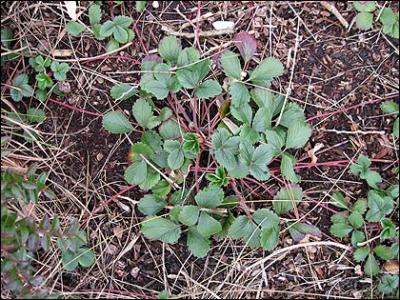
Native or not, every garden is better for plenty of evergreen components, whether for screening purposes or just to keep the garden looking lively through what often feels like a long winter. I’ve written about evergreen native shrubs in previous columns (search the archives at www.eugeneweekly.com). Here I’d like to focus on evergreen additions to the groundcover layer. Western Oregon has a plethora of plants that form effective groundcover, but many of them (wood sorrel, false lily of the valley, bunchberry and bleeding heart, for starters ) lose their leaves in winter.
Two evergreen shrubby natives are frequently used as ground cover and are widely available. Kinnikinnick, or bearberry, (Arctostaphylos uva-ursi) is sometimes planted in monoculture, as an alternative to invasives such as ivy. In a sunny situation, kinnikinnick can make a solid carpet — with the right conditions. In the valley, that generally means a little summer watering is required. It seems more comfortable in partial shade, but it won’t grow as densely there. So who needs a monoculture carpet, anyway? A mix seems more natural and interesting and is often easier to achieve. Creeping Oregon grape (Mahonia repens, Berberis repens) doesn’t make a solid carpet by itself but is great as an evergreen contribution to the ground layer, mingling with contrasting plants like inside-out flower (Vancouveria hexandra) and a woodrush or a sedge.
Our familiar inside-out flower is deciduous, but two vancouveria species from southwestern Oregon are glossy leafed and evergreen. Unfortunately they are not as easy to find. I don’t have any personal experience with yellow flowered Vancouveria chrysantha, but V. planipetala makes a super, slow-spreading carpet as weed proof as its Japanese relative, epimedium. The white flowers are tiny, but still effective and charming against the deep green foliage. I have not found it difficult to grow, but it prefers shade, a woodsy soil and occasional supplemental water. (It also tolerates regular watering, if the drainage is good.)
Piggy-back plant (Tolmeia menziesii) gets its common name from the infant plants that develop at its leaf bases — a bit of a novelty. It makes rambling, evergreen patches of fuzzy foliage in shady places. That’s where we usually see yerba buena (Satureja douglasii), too, although it tolerates quite a bit of sun in my damp garden. Both these plants are best used in a mixed carpet of natives in leafy soil. For a more comprehensive carpet in sun, one of your best bets, native or otherwise, is the beach strawberry (Fragaria chiloensis), which is determinedly green all winter and capable of keeping out most non-woody weeds.
The wonderful evergreen irises, Iris douglasiana and I. innominata, squeak by as Oregon natives, occurring naturally in southwestern Oregon. They form substantial clumps that look at home among mixed groundcover or punctuating a carpet of strawberry or sedum. There are quite a few native sedums in Oregon, perhaps the choicest (and in gardens the most familiar) being Sedum spathulifolium, best known in the selection ‘Capo Blanco.’ It’s a demure patch plant for sun or light shade, and physically fragile. For a slightly tougher mat former, try S. oreganum, S. divergens or S. lanceolatum. All are available from native plant nurseries.
Cynthia Lafferty (Doak Creek Nursery) introduced me to the sturdy native form of Heuchera micrantha (coral bells, alum root). It forms expanding clumps of green, scalloped leaves that last all winter. Lafferty pointed out to me that in loose, gravelly soil the offsets travel further, eventually forming tight, ground covering mats. I have found this heuchera easier to grow on heavy soil than most garden varieties, but I do help it out with a gravel mulch.
Another pleasant surprise from Lafferty’s nursery has been rosy checkermallow (Sidalcea virgata). Very easy in damp ground, it is shorter and neater than some checkermallows, and the flowering stems stand up well. The surprise is that the basal leaves are completely unmoved by winter and their lively green contrasts nicely with the dead leaves I use to mulch my mini-wetland.
February is a great time to plant natives, but don’t forget it is also the perfect time to weed. Annual weeds are small now, and you’ll catch most of them before they flower and set seed. The ground is damp and perennials such as dandelion seem less tightly bound in the soil, so you can often dislodge the entire root with a weeding fork. Desirable plants disturbed by your activities have time to re-establish themselves before the soil dries out. And if you think you are busy now, just imagine how much more there is to do in March and April!